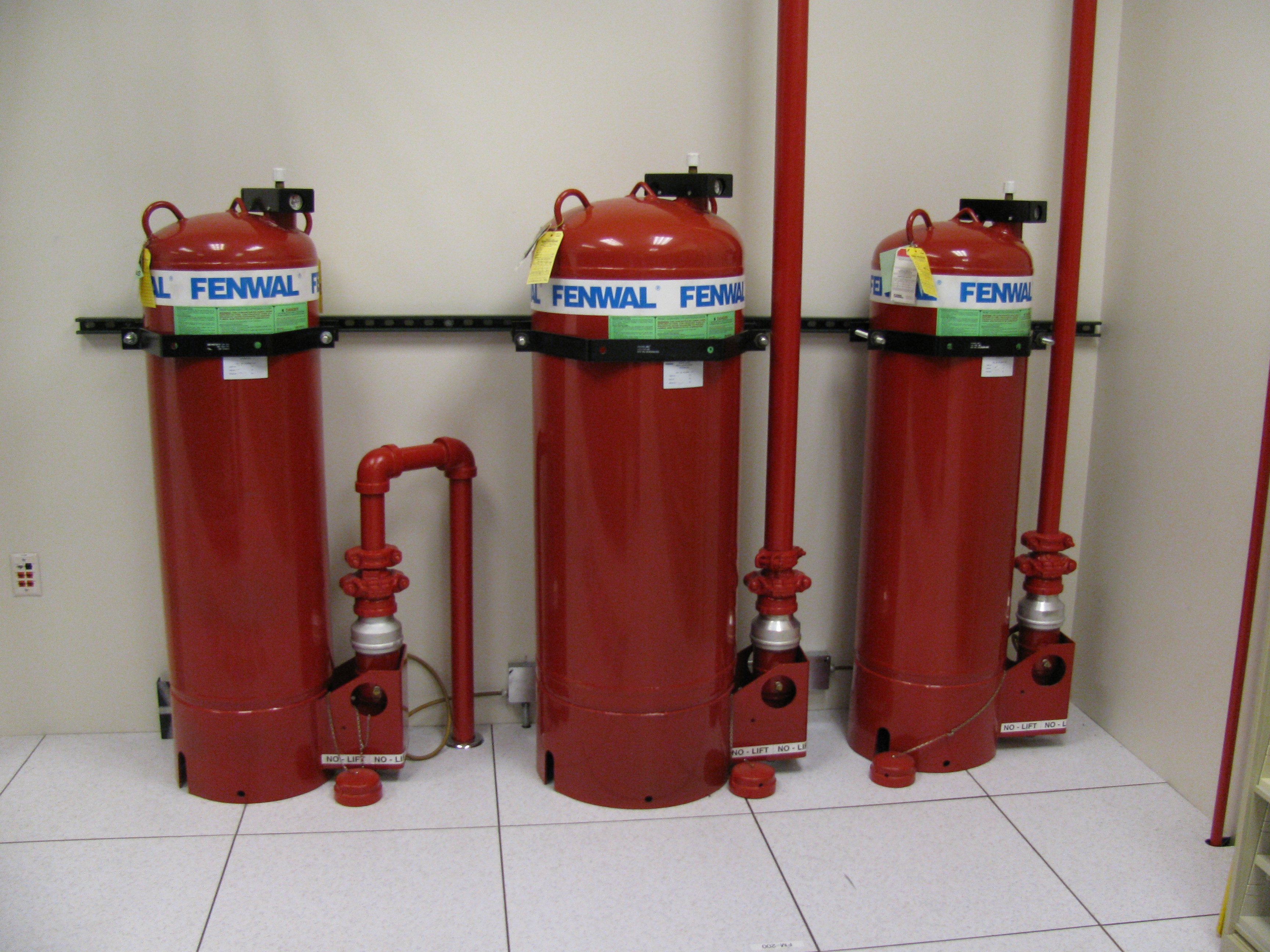FM200 fire suppression tanks (Photo: Robert Harker, under CC BY-SA 3.0)
Where can you get training and education in fire protection engineering? What are the primary pieces of legislation and guidance governing the sector? This is the 101 on fire protection engineering.
What is fire engineering?
Fire protection engineering and fire safety engineering together comprise the umbrella term ‘fire engineering’, a distinct discipline of engineering that applies scientific and engineering principles to the protection of people and property from the risks of fire and smoke.
Fire protection engineering focuses on fire detection systems, including heat, smoke and flame detectors and alarm systems; active fire protection and suppression; and passive fire protection, which is designed to contain and mitigate fires. Fire safety engineering, on the other hand, concentrates on human behaviour and evacuation strategy.
The job of a fire protection engineer these days is complex. It includes tasks such as design, planning, installing, servicing and maintaining fire alarm systems and equipment, emergency lighting and portable fire extinguishers; testing and maintenance of dry risers, hose reels and sprinkler systems; and installation of fire signage. Fire protection engineers work closely with architects, other engineers, investigators and legislators to identify risks and design protection from fire.
The fire engineering market
According to a US market research report, the fire protection systems market is predicted to be worth $79.18bn by 2020, up from $33.58bn in 2013 at a compound annual growth rate (CAGR) of 11.53 %.
This growth is estimated to be fuelled by increasing worldwide health and safety legislation, and expansion in the Asia-Pacific market.
According to this report, some of the major players in the fire protection market include Gentex Corporation (US), Halma PLC (UK), Hochiki Corporation (Japan), Honeywell International Inc. (US), Johnson Controls (US), Robert Bosch GmbH (Germany), Siemens AG (Germany), Tyco (Switzerland), United Technologies Corporation (US) and VT MAK (US). The market is thus currently led by the US and Europe.
The global fire protection market is fragmented, with local players dominating. Fire protection is mainly used in consumer goods and retail; energy and power; government; healthcare; manufacturing; oil; gas and mining; transportation and logistics.
The report states that manufacturing offers huge potential for growth in the market, because of advances in technology in this sector. Oil, gas and mining were initially responsible for the use of large scale fire protection systems, while consumer goods and retail is still an emerging market offering good opportunities for fire protection technologies to penetrate.
Associations such as the Fire Industry Association (FIA) represent the industry and publish regular reports on the market. The latest FIA market conditions survey of members and non-members in the UK states that an increase in construction is sustaining growth of the fire sector, although margins are not as high as desired.
The fire protection profession is represented in the UK by the Association for Specialist Fire Protection (ASFP), (passive fire protection), the Fire Protection Association (FPA) and the Institute of Fire Engineers (IFE) and in the US and worldwide by the Society of Fire Protection Engineers (SFPE)
The IFE also operates internationally.









It is good that you gave us a bird’s eye view of what the fire protection engineers do like they are focused on fire detection systems, including heat, smoke and flame detectors and alarm system just to name a few. If that is the case, that is not really an easy job to handle and definitely requires thorough knowledge and practice in that field. My uncle has a plan to hire a professional like that to be his regular staff in his planned business next year due to the nature of his business.